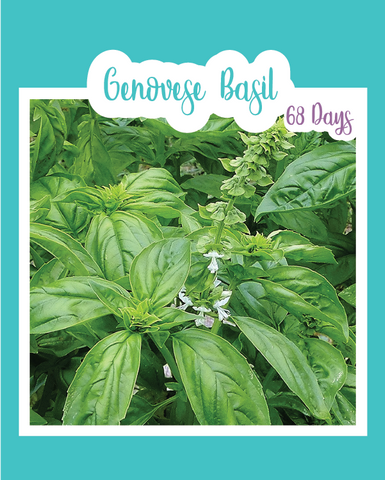
Bouquet Dill
Seed Count: Approx. 250 seeds
Days to Maturity: 40-45 Days for leaf harvest; 85-105 for seed harvest
Description: Bouquet Dill is an easy to grow aromatic herb, that flowers a bit earlier than other dill types. As stated in its name, it's often grown for bouquets, since it produces loads of large, 6 inch flower umbels, with cute yellow blooms, on long stems that are perfect for cut flowers. This variety produces lots of edible seeds as well, and delicious dark green foliage great for pickling and flavoring foods with. You can use the seeds, foliage, and flowers to add to soups, omelets, salads, spreads, and sauces. You can also use it as a seasoning for your veggies, meats, and fish. Dill can also be dried for future use. Dill is a must have herb in any garden, plus the pollinators love it. This variety will easily self seed itself, if you don't remove the seed heads.
How To Grow
Sowing: Dill does not like to be transplanted, so it's best to direst sow it. However, you can still start them indoors if you have a short growing season. Minimize transplant shock by starting them in peat pellets or pots. To direct sow, wait until the last spring frost has passed, and start seeds in an area with full sun and fertile, well draining soil. Sow seeds about 1/4 inch deep, and about 8 inches apart. Once their true leaves start to show thin to the strongest plants leaving about 12 inches of space between them. This dill makes for a great high yield container plant as well.
Growing: Dill is super easy to grow, and is a pretty carefree easy herb for any beginner. Just make sure you keep dill well watered. If the soil dries out, you may cause it to bolt. Mulch your plants to conserve water and to control weeds that may compete for water and nutrients. Dill makes for a great companion plant! Plant with brassicas, asparagus, corn, cucumbers, and onions. Lettuce and dill make for great companion plants, as well, and is probably my favorite combination because it repels spider mites and aphids that usually harass my lettuce. It will also repel cabbage worms! Beans are beneficial to plant with dill because the beans fix the soil with nitrogen that will help their leafy growth flourish. However, keep dill away from tomatoes. They've been known to stunt tomato plants and attract tomato hornworms, which can devastate your tomato crop.
Harvesting: As soon as dill reaches a good size, you can start to harvest its leaves as you need them. Dill, as well as most other herbs, are best picked early in the morning. While other herbs may dwindle in taste once they flower, dill actually reaches its peak, so it's best to wait until the flowers just start to open to harvest leaves. Dill tastes best picked fresh, but can be refrigerated for a couple days, or preserved by drying or freezing the leaves. To save seeds for future growing or for culinary use, allow the heads to develop and dry on the plant. Seeds will turn brown, this is when you can cut off the heads and spread them out to dry (I just leave mine on the plant and cover with jewelry bags to catch any dried seeds that may fall). If seeds are left on the plant to drop, they'll easily reseed themselves. Rub seeds gently together, in order to separate the seeds from the heads, then store in an air tight container for later use. Seeds can be stored for up to 5 years.




